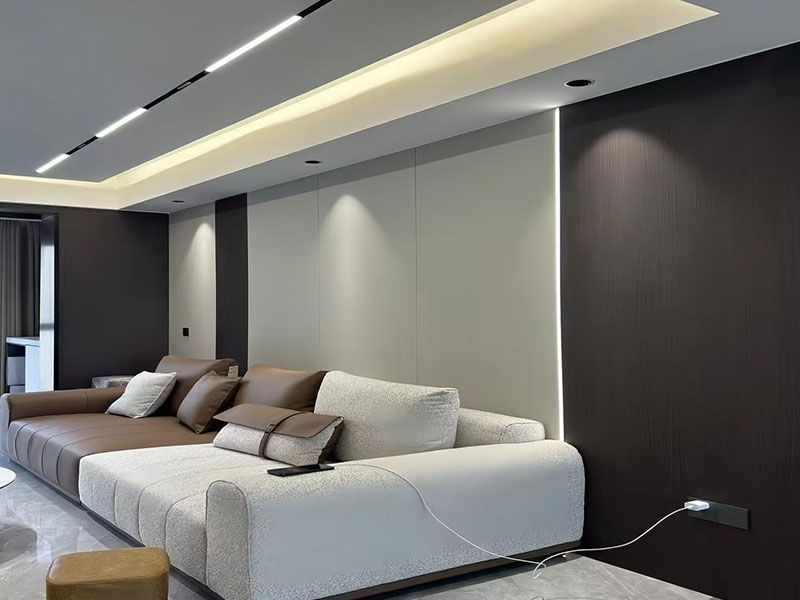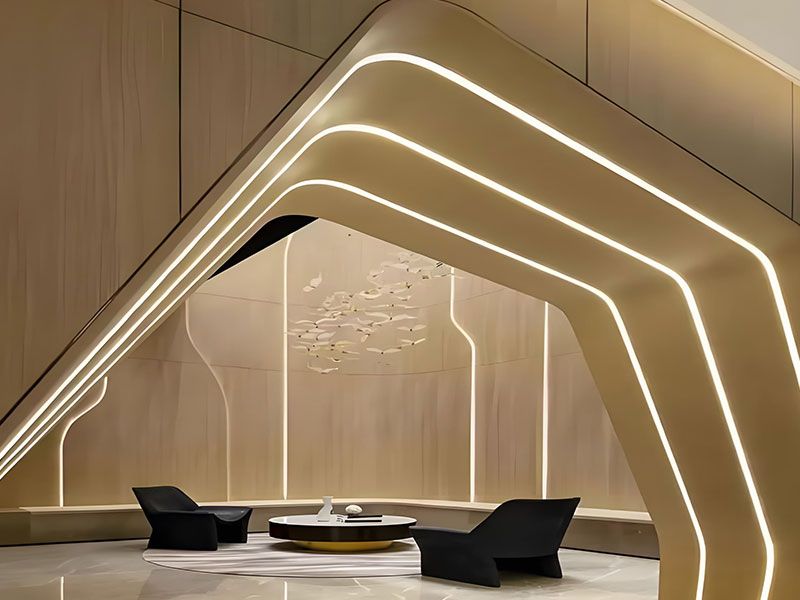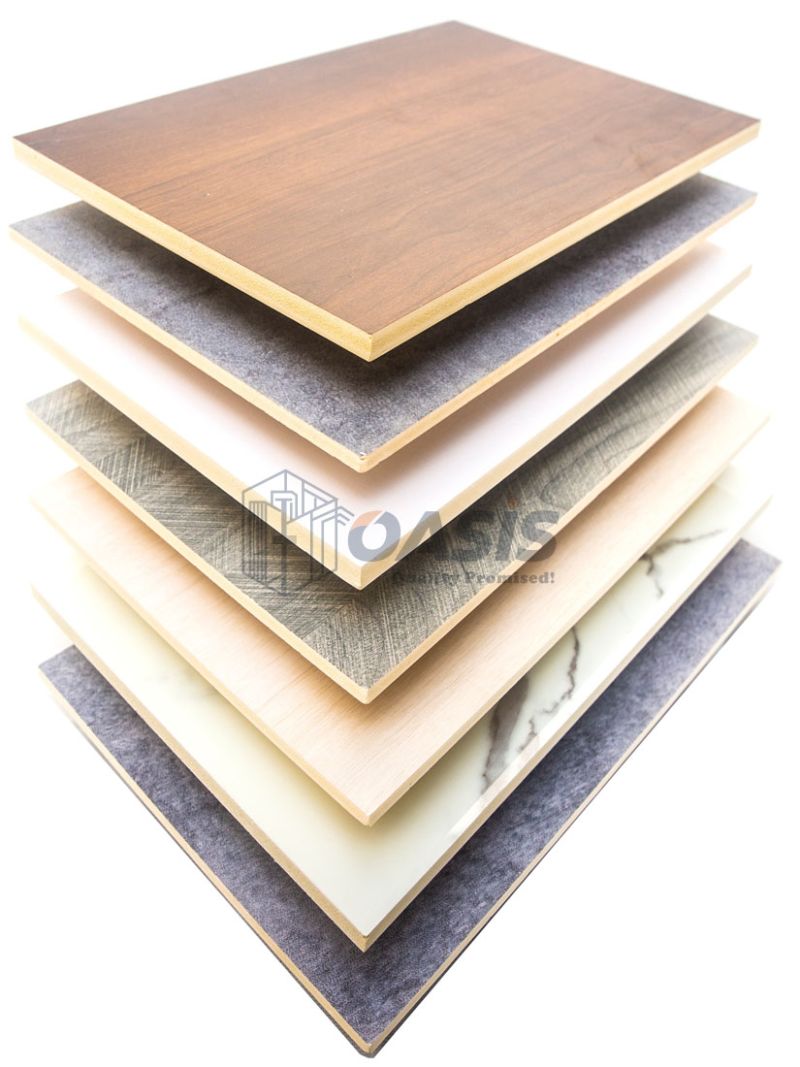Transform Your Walls with Elegance and Durability: The Rise of PVC Wooden Veneer for Wall Paneling and Cladding
In the ever-evolving world of interior design, homeowners and designers are constantly seeking materials that blend aesthetic appeal with practical performance. Enter PVC wooden veneer for wall paneling and cladding – a game-changer that offers the luxurious look of wood without the inherent limitations of natural timber. This versatile material is increasingly becoming the go-to choice for creating stunning, resilient, and cost-effective wall finishes in a variety of settings.
What is PVC Wooden Veneer?
PVC (Polyvinyl Chloride) wooden veneer is a decorative film that mimics the appearance and texture of natural wood. It's essentially a thin layer of PVC printed with high-definition wood grain patterns, often embossed to replicate the tactile feel of real wood, and then treated for durability. This film is typically laminated onto various substrates like MDF, plywood, or particleboard, or can be applied directly to existing smooth surfaces.
Why Choose PVC Wooden Veneer for Your Walls?
The decision to use PVC wooden veneer for wall paneling and cladding brings a host of compelling advantages:
1. Unrivaled Durability and Resilience
Unlike natural wood, which can be prone to scratches, dents, and wear over time, PVC veneer boasts exceptional durability. Its robust surface is highly resistant to abrasions, impacts, and daily wear and tear, making it ideal for high-traffic areas in both residential and commercial spaces.
2. Superior Water and Moisture Resistance
This is arguably one of the biggest selling points of PVC wooden veneer. Its inherent waterproof nature makes it an excellent choice for areas where moisture is a concern, such as: * Bathrooms: Create a spa-like ambiance without worrying about swelling or warping. * Kitchens: Protect walls from splashes and humidity. * Basements: A durable solution for naturally damp environments. * Commercial spaces: Restaurants, cafes, and hotels can maintain a pristine look even with frequent cleaning.
3. Effortless Maintenance
Say goodbye to the rigorous maintenance requirements of real wood. PVC wooden veneer requires only a simple wipe-down with a damp cloth and mild detergent to keep it looking pristine. It's resistant to stains and doesn't require sealing, waxing, or special polishes, saving both time and money in the long run.
4. Aesthetic Versatility and Realistic Appeal
Modern manufacturing techniques allow PVC veneers to replicate an astonishing array of wood species, from the classic elegance of oak and walnut to the contemporary charm of ash and maple. They come in various finishes – matte, glossy, textured, and embossed – allowing for endless design possibilities to match any interior theme. The visual fidelity is so high that it's often hard to distinguish from real wood at first glance.
5. Cost-Effectiveness
Achieving the look of natural wood can be an expensive endeavor. PVC wooden veneer offers a significantly more budget-friendly alternative without compromising on visual appeal or performance. This makes high-end aesthetics accessible to a broader range of projects.
6. Hygienic and Pest Resistant
The non-porous surface of PVC makes it resistant to mold, mildew, and bacterial growth, contributing to a healthier indoor environment. Additionally, unlike natural wood, it is completely impervious to termites and other wood-boring pests, ensuring the longevity of your wall cladding.
7. Easy Installation
PVC wooden veneer can be efficiently installed, whether it's pre-laminated onto panels or applied as a film. It can be cut, shaped, and adhered relatively easily, which can help reduce installation time and labor costs compared to intricate real wood installations.
Where Can You Apply It?
- Feature Walls: Create a striking focal point in living rooms, bedrooms, or dining areas.
- Corridors and Hallways: Add warmth and protect walls in high-traffic passages.
- Commercial Interiors: Elevate the ambiance of offices, retail stores, hotels, and restaurants with durable and attractive wall finishes.
- Moisture-Prone Areas: As highlighted, kitchens, bathrooms, and basements greatly benefit from its water resistance.
- Ceiling Cladding: Extend the aesthetic appeal to ceilings for a cohesive design.
Conclusion
PVC wooden veneer for wall paneling and cladding stands as a testament to innovation in interior design materials. It successfully bridges the gap between the timeless beauty of wood and the demands of modern living, offering a solution that is durable, low-maintenance, moisture-resistant, and aesthetically diverse. For anyone looking to infuse their spaces with the warmth and elegance of wood without the associated drawbacks, PVC wooden veneer presents an undeniably smart and stylish choice.



